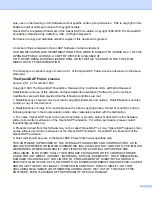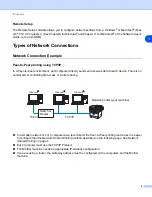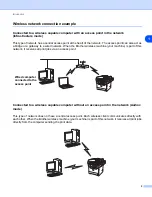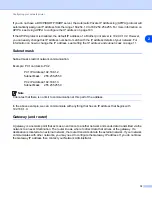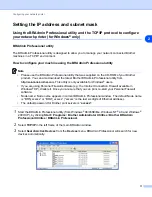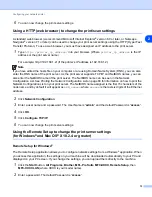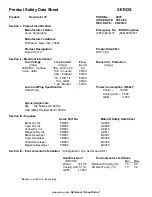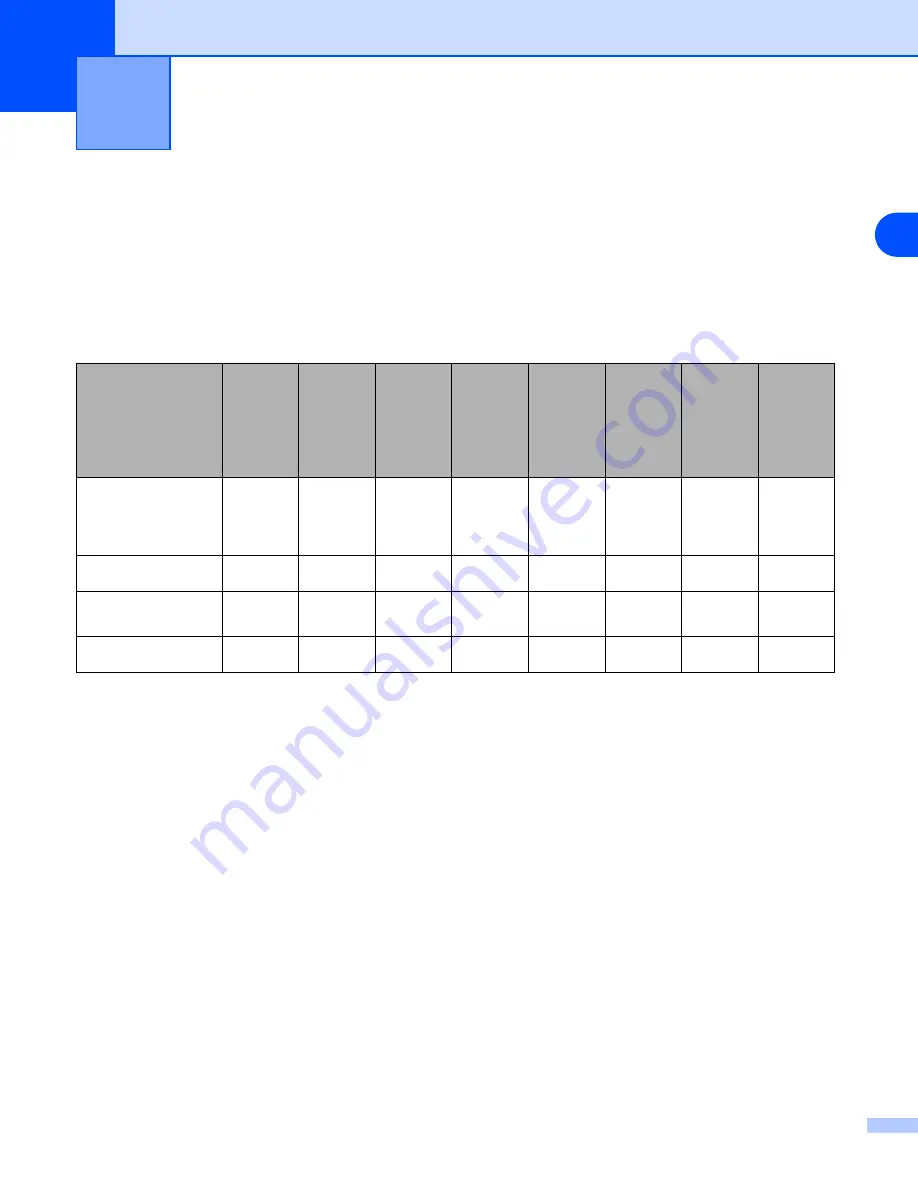
1
1
1
Introduction
Overview
The Brother machine can be shared on a 10/100 Mb wired or IEEE 802.11b/802.11g wireless Ethernet
network using the internal network print server. The print server supports various functions and methods of
connection depending on the operating system you are running on a network supporting TCP/IP. These
functions include printing, scanning, PC-FAX send, PC-FAX receive, Remote Setup and Status Monitor. The
following chart shows what network features and connections are supported by each operating system.
*1
A wireless network connection is supported only between the Brother machine and an access point for PC’s running Windows NT
®
Workstation 4.0 and Windows
®
XP Professional x64 Edition.
To use the Brother machine through a network, you need to configure the print server, and set up the
computers you use.
For Wireless Users:
To achieve optimum results with normal every day document printing, place the Brother machine as close to
the network access point (router) as possible with minimal obstructions. Large objects and walls between the
two devices as well as interference from other electronic devices can affect the data transfer speed of your
documents.
Due to these factors, wireless may not be the best method of connection for all types of documents and
applications. If you are printing large files, such as photos on glossy paper or multi-page documents with
mixed text and large graphics, you may want to consider choosing wired Ethernet for a faster data transfer,
or USB for the fastest throughput speed.
Operating
Systems
10/100
BASE-TX
Wired
Ethernet
(TCP/IP)
IEEE
802.11b/g
Wireless
Ethernet
(TCP/IP)
Printing
Scanning
PC-Fax
Send
PC-Fax
Receive
Remote
Setup
Status
Monitor
Windows
®
98/98SE/Me/2000/XP
/XP Professional x64
Edition
*1
√
√
√
√
√
√
√
√
Windows
NT
®
4.0
*1
√
√
√
√
√
Mac OS
®
X 10.2.4 or
greater
√
√
√
√
√
√
√
Mac OS
®
9.1-9.2
√
√
√




